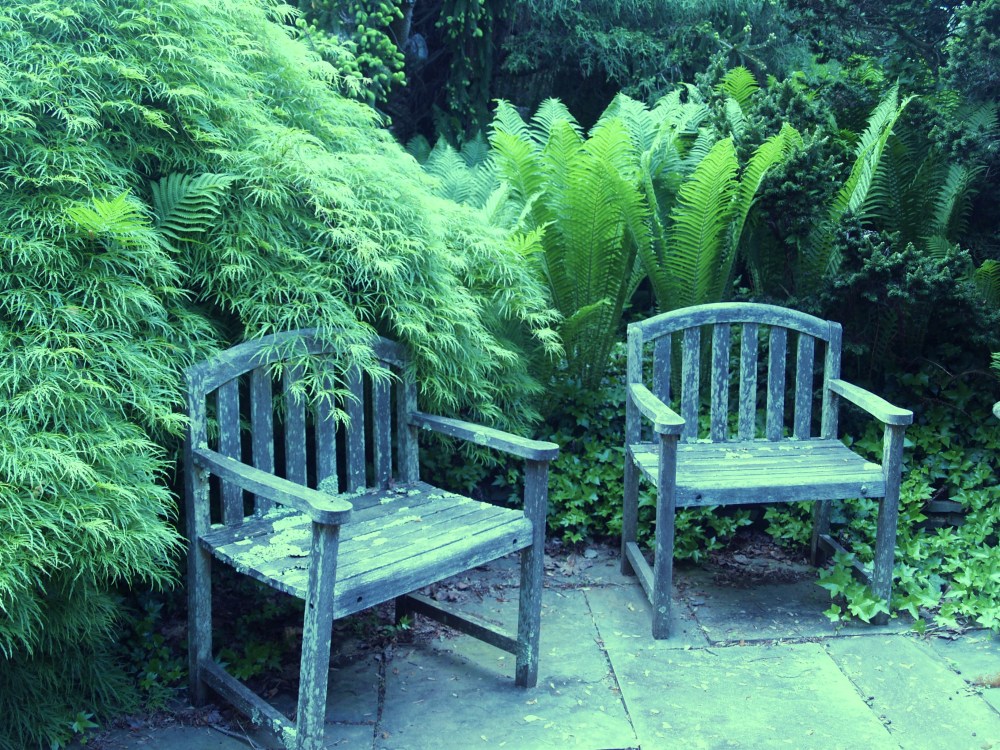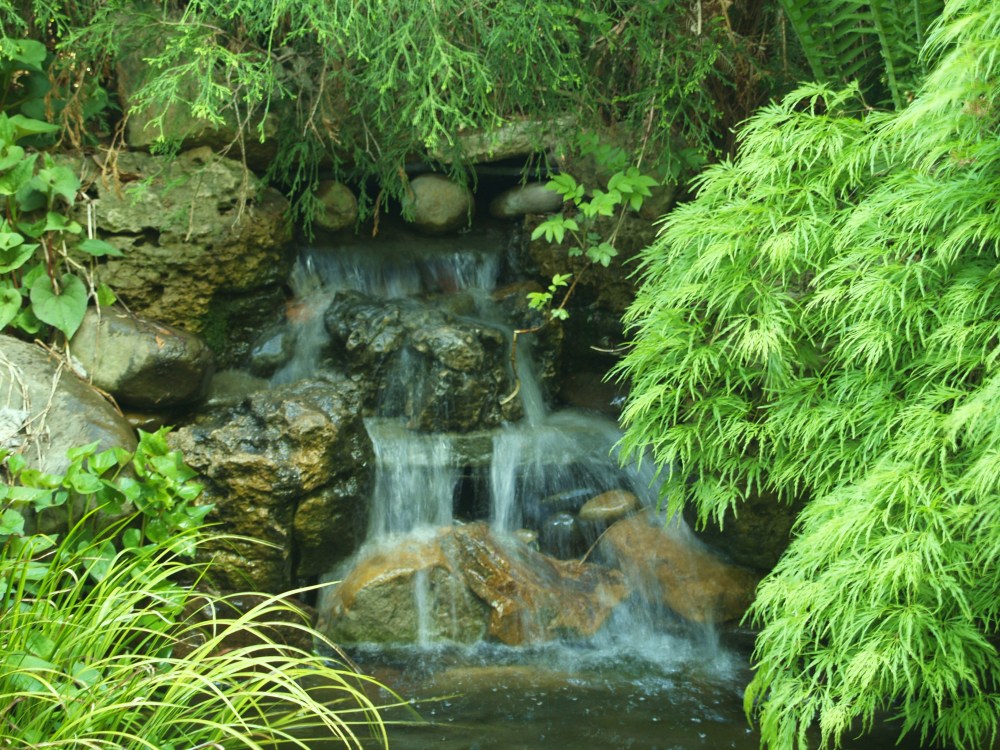My wife says the chairs are fine, but I wouldn’t dare sit on them (I suspect she’s after the life insurance. I wore out my welcome years ago). They’ve been in the garden for twenty years or more. They’re not teak, but some other type of exotic, rot-resistant wood that was going around at the time. I’m fairly confident that the exotic wood has not rotted, but the dowels that hold it together are pine or poplar, or some other soft wood that is bound to be fully rotted by now. I’m afraid that the only thing holding the chairs together is gravity, and if my wife trusts sitting on them, be my guest.

For as long as I can recall the chairs have just been ornaments. At one time there was a small bench alongside on the patio, but the dwarf blue spruce grew to be not-so-dwarf, so the bench was moved elsewhere. I don’t recall where because it soon fell apart and was discarded. When it first fell to pieces I remember nailing it back together because I couldn’t replace the rotted dowels, but that didn’t last, and the bench is long gone.
This patio is rarely used except to walk through, and even when the bench and chairs were new my wife and I rarely sat on them. Why? The small, circular bluestone patio is on the top side of the first of the ponds I built. I planted a Japanese maple and other stuff above the pond, so that from the patio the water can’t be seen and the waterfall can’t be heard. It should be a cardinal rule of pond construction and design that a seating area must be below the pond so that the water and waterfall are easily seen when sitting. The patio was constructed so long ago that I don’t recall whether it came first or the pond, so I don’t know if I ignored this matter of common sense, or if there was some other reason for the patio being placed where it is. The point is, there was never any reason to sit on the chairs on this patio.
Now, the green leafed dissectum Japanese maple (Acer palmatum dissectum ‘Viridis’) has grown into the patio to partially cover one of the chairs, and Ostrich ferns (Matteuccia struthiopteris) strain at the patio edges. If there was any need to sit in the chairs I would have to move them further into the center of the patio, but then the path to the lower patio would be blocked. Oh yeah, the lower patio. Since I couldn’t see or hear the water from this upper patio I built a second one a bit further down the slope. At the same time I decided that a second pond would be nice, so two large stone slabs in the path cross a section of this newer pond.
The second pond is visible from the second patio, but also from the deck above. They’re only ten feet apart, but one pond cannot be seen from the other (though the water can be heard), and one patio is not visible from the other through the maple and tall nandinas. Trust me, it all fits together somehow.
If you’ve gotten hopelessly confused by the chain of events in constructing two patios and two ponds, then this is likely to be a good time to end this story, before I can explain how and why the third, fourth, and fifth ponds were built, and the other three or four patios. I suppose that garden design should be a more organized process, but when you’re constructing a garden for yourself the rules seem not to apply so much, so here I am with five ponds and patios, and more plants than I can count. It’s wonderful!
so what I’m hearing is that even with a puny 0.2 acre lot, we have room for at LEAST one pond. I like that.
Absolutely! I can almost guarantee that a pond will become your favorite spot in the garden. I have a bunch of patios, but the one where I relax is next to a pond (and surrounded by plants).